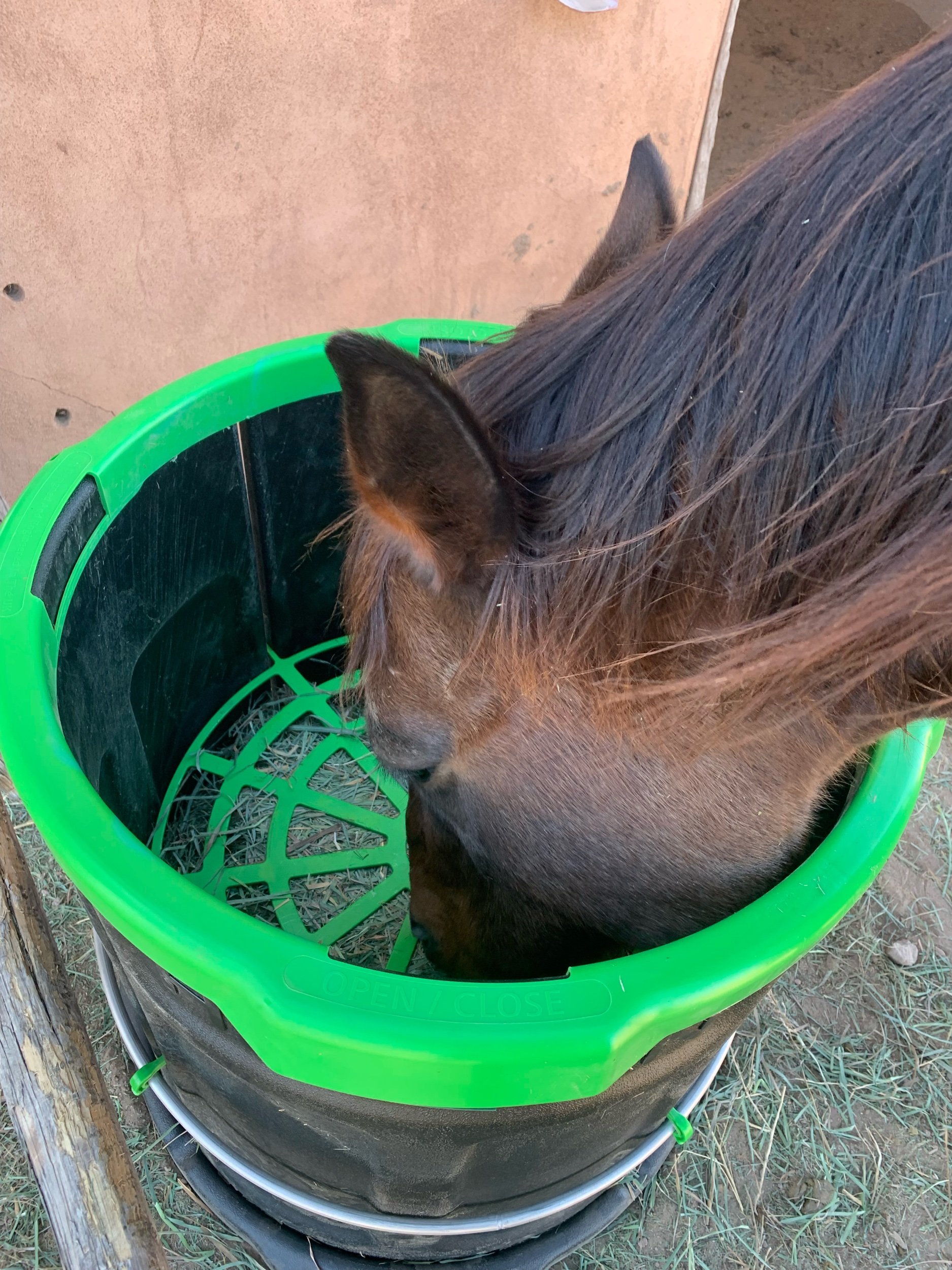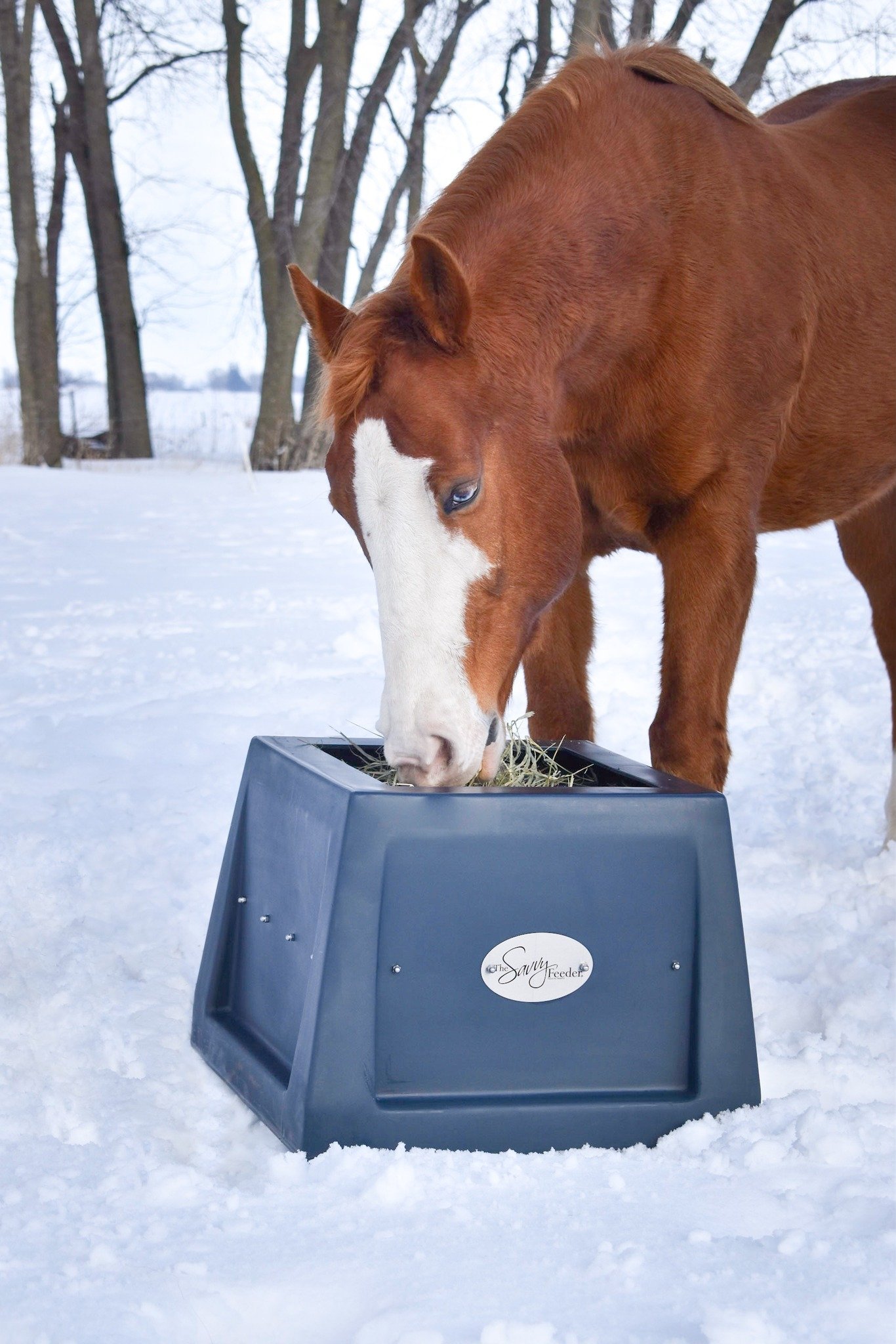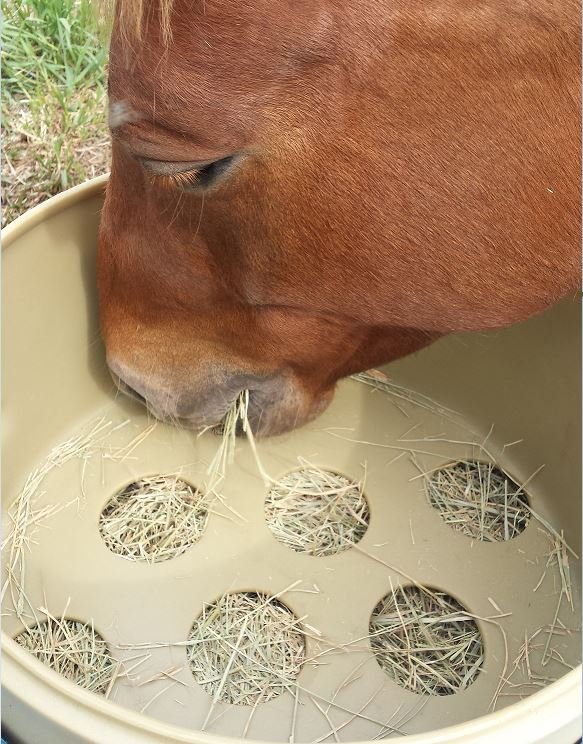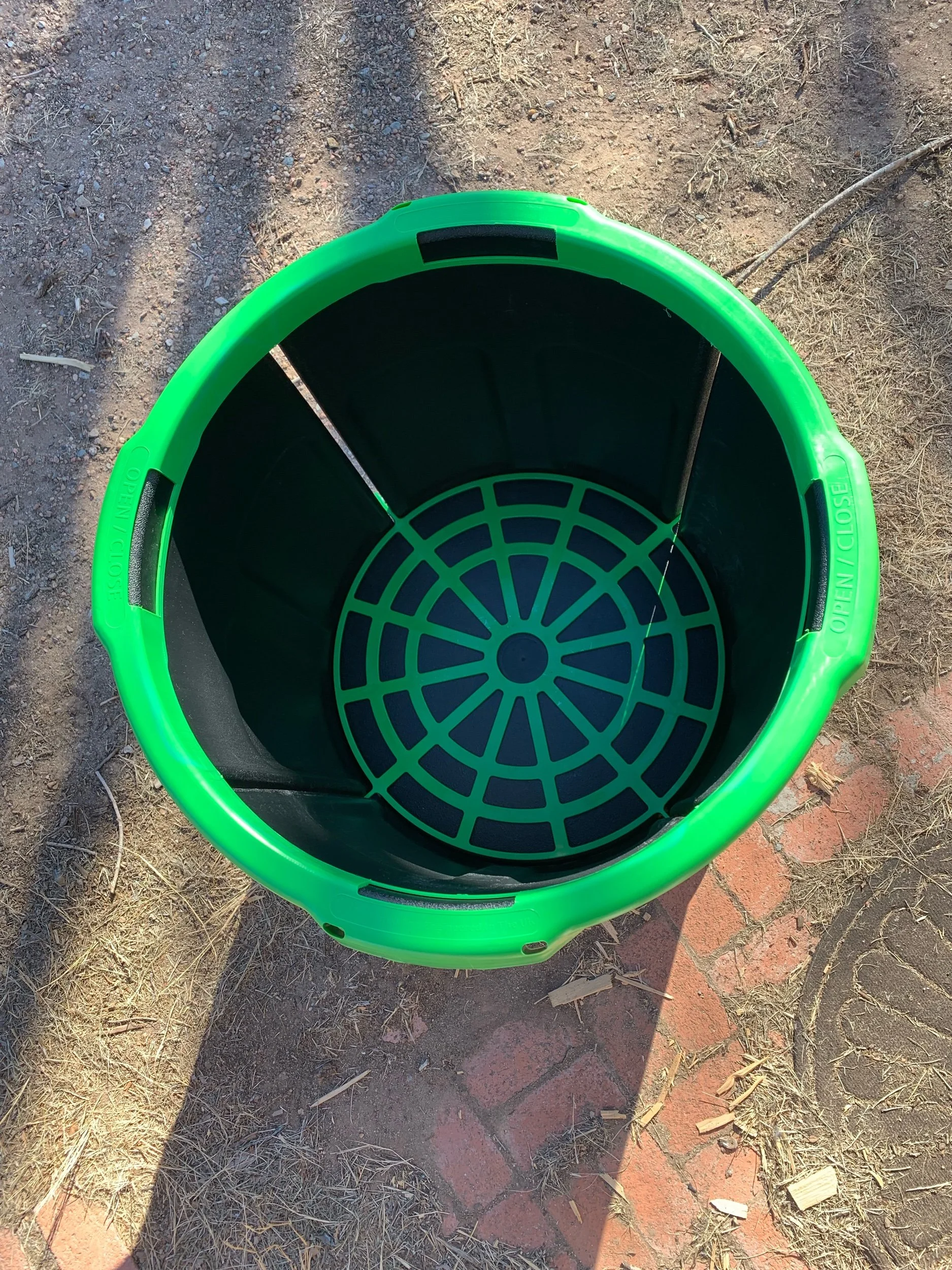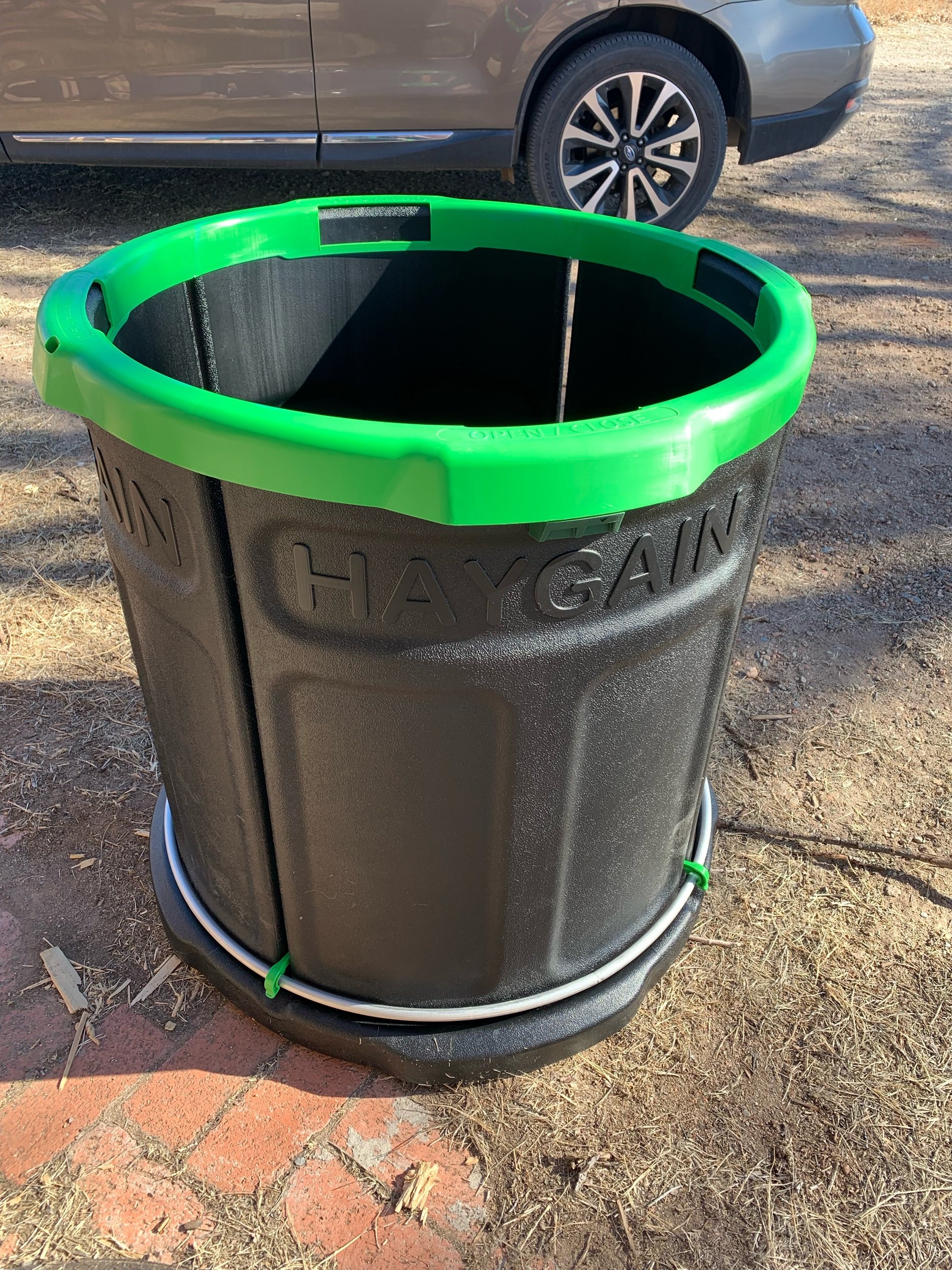Slow Feeders for Horses
There are many options for slow feeders. Below we will discuss the various pros and cons for each of them! The main concern across the board with slow feeders is their potential impact on teeth and body. Slow feeders are typically crafted with netting or grates (metal, plastic or nylon).
Hay Nets
The most common slow feeding option is with a hay net. Personal favorites are by Hay Chix - follow the link for a discount code.
PROS: There are various net sizes which can be used for different types of hay and once transitioned to a smaller net, you can keep your horse eating even longer.
CONS: The downside is that most nets are a pain to stuff (pro tip: use a trash can) and they have to be hung somewhere. If you choose to hang a net, be sure to offer it at different heights and locations as often as you can. Eating off the ground could potentially cause discomfort in a horses body. Nets might also be a safety hazard for shod horses unless hung high enough and sturdy enough.
the Hay Pillow
These genius ‘pillows’ offer the benefit of feeding from the ground while simultaneously out of a net. The zippered open end makes it easy to stuff and the canvas backing keeps your hay from getting dirty and gross. They are a little pricey at $70-$80 each which might make feeding a large herd or offering multiple feeding stations a little difficult.
Panel Feeders by Hay Chix
Panel feeders are one of the easiest ways to quickly stuff & offer slow fed hay through a net, however this might not work well for stalled horses unless you have the right kind of gate.
Simply fasten to your fencing with beefy zip ties and then shove the hay in. You can change their location and position by removing and replacing the zip ties.
$85-$100 depending on net size and choice.
CONS: Fixed position, off the ground, which can be hard on the poll, jaw, neck, etc.
ALTERNATIVE: Wall Feeder by Hay Hoops
hay Balls
These plastic balls fit a flake of hay and not only make a great game & boredom buster but also a slow feeding method. Some horses may not be into the idea of having to roll a ball around to eat so this option should probably be offered in addition to something else.
Savvy Feeder
While the concept of these box feeders is fantastic they come with a hefty price tag! $369 plus shipping.
These feeders are smaller and more compact than their competitors.
The feeder box and grate are made of polypropylene - no metal. Many years of testing went into identifying a material that would not get sharp when horses chew it and cause damage to their sensitive lips, gums, or tooth enamel.
Keep an eye out for factory seconds (with scratches, dents, dings, etc.) to save a bit.
They also have a yearly black Friday sale where you can get up to 30% off.
Another durable ‘barrel’ feeder that comes with a hefty price tag! This one is similar to the HayGain Forager but comes in more sizes and shapes.
The least expensive option is a mini for $289, but the XL version is only $20 more at $309 direct from their website.
This one definitely looks easier to load then the others as the ‘grate’ is just a tub or pan that slides on top but still locks in place.
There are three pan sizes, two for feeding hay and one for feeding pellets.
Great feedback from owners on this option!
Another durable ‘box’ feeder that comes with a hefty price tag! When shopping at the local horse rescues thrift store, I managed to snag one of these for a steep discount and figured it was worth trying.
$390 for the full kit including shipping.
This one comes in several pieces, is shaped like a barrel once put together. It is fully collapsible (and breathable) this allows for easy travel and cleaning.
Fairly easy to assemble and comes with a plastic grate.
There are two options for grate sizing. The white one is the easier option and the green is the slower or standard option.
The grates are expected to wear over time and will need to be replaced. It’s $50 for a 2-pack.
Holds up to 26lbs of hay which should be loosely scattered upon loading rather than just throwing a compressed flake in.
There is a metal slider on the outside that also helps to visually gauge how much hay is left from afar.
CONS: Securing and removing the grate is rather difficult. Especially in the winter! Rubber gloves do help though.

